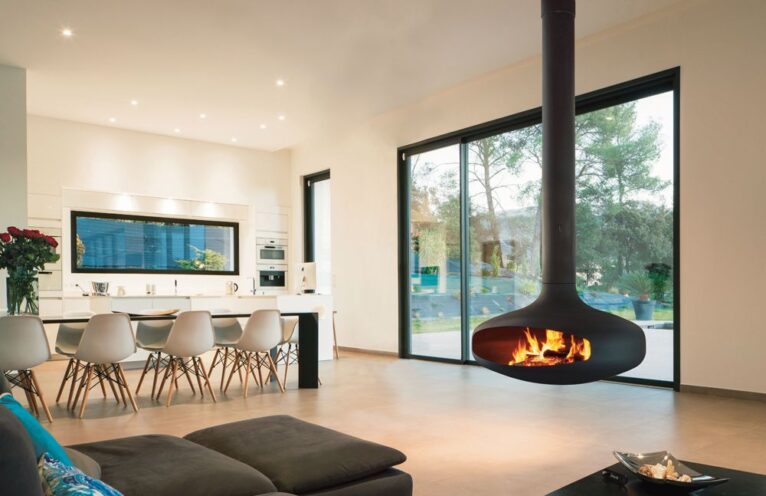In a world that increasingly values calm, clarity, and craftsmanship, Japandi design has emerged as a compelling interior trend. A hybrid of Japanese and Scandinavian aesthetics, Japandi combines the clean lines and functionality of Nordic design with the Zen-inspired minimalism and natural harmony of Japanese interiors. The result? Spaces that feel warm yet orderly, simple yet soulful. In this guide, we explore the origins, key characteristics, and practical steps to creating your own Japandi interior.
Origins of Japandi Design
Japandi is not merely a mashup of styles—it reflects a shared philosophy. Both Scandinavian and Japanese design traditions value:
- Functionality over formality
- Simplicity without sterility
- Natural materials and muted palettes
- Mindful, intentional living
This design fusion gained momentum in the late 2010s and has since become a favorite among those seeking wellness and minimalism in their home environment.
Table: Japandi vs. Scandinavian vs. Japanese Design
| Design Element | Scandinavian | Japanese | Japandi |
|---|---|---|---|
| Aesthetic Focus | Hygge, comfort, light | Zen, serenity, space | Calm, functional, grounded |
| Color Palette | Cool neutrals, whites | Earthy tones, dark woods | Balanced: light & earthy tones |
| Materials | Birch, wool, linen | Bamboo, paper, clay | Oak, linen, stone, rattan |
| Furniture Style | Mid-century, clean lines | Low, floor-level pieces | Sleek with low profiles |
| Decorative Approach | Minimal yet cozy | Minimal and symbolic | Minimal with layered textures |
Key Principles of Japandi Interiors
1. Minimalism with Purpose
Decluttering is essential—but so is meaningful styling. Every object should serve a function or evoke calm.
2. Nature-Inspired Materials
Embrace the imperfect beauty of natural elements:
- Light wood and bamboo
- Clay pottery
- Wool, cotton, and linen textiles
- Raw stone and handwoven baskets
3. Neutral and Muted Palettes
Japandi avoids overly bright or trendy colors. Stick to shades like:
- Cream, sand, and taupe
- Charcoal, slate, and black accents
- Sage, rust, and muted blue for contrast
4. Clean Lines and Open Space
Furniture should be low-profile with smooth edges. Avoid clutter and leave breathing room between pieces.
5. Softness Through Textures
Because Japandi is so pared-back, texture brings warmth:
- Layer textiles like throw pillows, rugs, and curtains
- Choose matte over glossy finishes
Furniture and Layout Tips
Seating
- Look for low-slung sofas with wooden frames
- Pair with leggy Scandinavian lounge chairs
Tables
- Natural wood coffee tables with minimal legs
- Dining tables with rounded corners and simple silhouettes
Storage
- Open shelving with curated items
- Built-ins or freestanding units in light wood
Layout
- Favor asymmetry and negative space
- Create zones for different activities (reading, tea, work)
Lighting in Japandi Homes
- Use soft, diffused lighting
- Paper lanterns and fabric lampshades are ideal
- Floor lamps with black or wooden bases add modern simplicity
- Layer natural light with warm-toned LED bulbs
How to Style Japandi Decor
- Incorporate ceramic or clay vases
- Display a single branch or stem instead of floral bouquets
- Use tatami-style mats or flatweave rugs
- Avoid excess art—choose one large statement piece per wall
Sustainability and Slow Living
Japandi aligns perfectly with eco-conscious design:
- Choose timeless pieces over trends
- Shop local or handmade goods
- Embrace imperfections in natural materials (wabi-sabi)
- Reuse and repurpose instead of replacing
Mistakes to Avoid
- Using too many decorative objects
- Mixing too many woods without tonal balance
- Over-lighting with harsh white bulbs
- Losing comfort in pursuit of minimalism
Japandi in Different Rooms
Living Room
- Neutral walls with linen curtains
- Sectional in soft gray or beige
- Organic-shaped coffee table
Bedroom
- Platform bed in light wood
- Shoji-inspired screens or sliding doors
- Soft cotton bedding in layered tones
Bathroom
- Stone sinks and wood vanities
- Matte black or brushed brass fixtures
- Candles or incense for ambiance
Kitchen
- Flat-panel wood cabinetry
- Minimal open shelving
- Ceramic dishware on display
Bringing Japandi into a Modern Apartment
Even in small spaces, Japandi works beautifully:
- Use vertical storage to maintain openness
- Stick to a light, unified palette
- Choose flexible furniture with clean lines
- Let empty space be part of the design
Japandi is more than a style—it’s a lifestyle rooted in harmony, craftsmanship, and calm. It celebrates fewer things done well and creates a peaceful retreat from our increasingly overstimulated world. By combining the warmth of Scandinavian design with the elegance of Japanese minimalism, you can cultivate a home that feels grounded, refined, and inviting.
In designing your own Japandi interior, focus on simplicity, sustainability, and soul—and you’ll create a space that’s truly timeless.


Leave a Reply